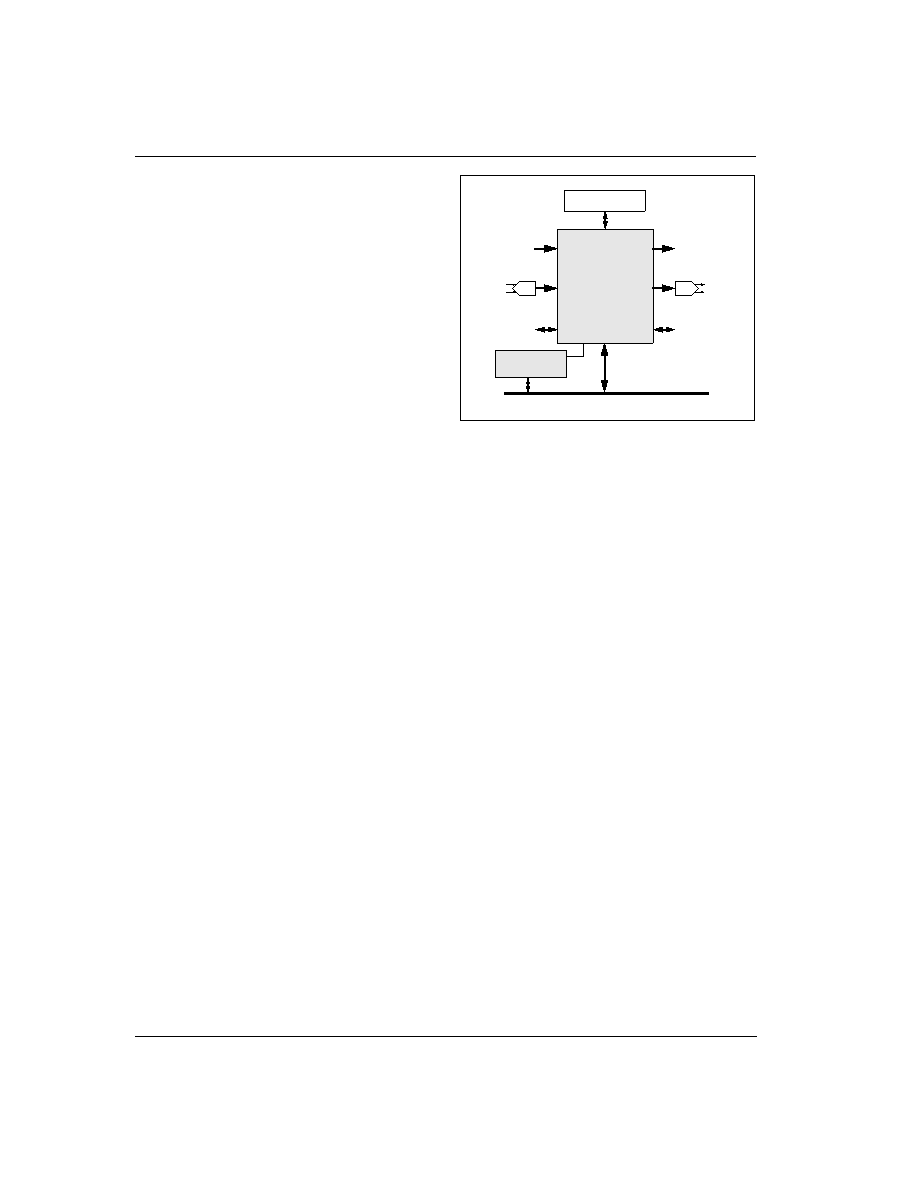- 您現(xiàn)在的位置:買賣IC網(wǎng) > PDF目錄36338 > 935263151557 (NXP SEMICONDUCTORS) SPECIALTY CONSUMER CIRCUIT, PQFP240 PDF資料下載
參數(shù)資料
| 型號: | 935263151557 |
| 廠商: | NXP SEMICONDUCTORS |
| 元件分類: | 消費家電 |
| 英文描述: | SPECIALTY CONSUMER CIRCUIT, PQFP240 |
| 封裝: | 32 X 32 MM, 3.40 MM HEIGHT, MSQFP-240 |
| 文件頁數(shù): | 379/518頁 |
| 文件大?。?/td> | 7111K |
| 代理商: | 935263151557 |
第1頁第2頁第3頁第4頁第5頁第6頁第7頁第8頁第9頁第10頁第11頁第12頁第13頁第14頁第15頁第16頁第17頁第18頁第19頁第20頁第21頁第22頁第23頁第24頁第25頁第26頁第27頁第28頁第29頁第30頁第31頁第32頁第33頁第34頁第35頁第36頁第37頁第38頁第39頁第40頁第41頁第42頁第43頁第44頁第45頁第46頁第47頁第48頁第49頁第50頁第51頁第52頁第53頁第54頁第55頁第56頁第57頁第58頁第59頁第60頁第61頁第62頁第63頁第64頁第65頁第66頁第67頁第68頁第69頁第70頁第71頁第72頁第73頁第74頁第75頁第76頁第77頁第78頁第79頁第80頁第81頁第82頁第83頁第84頁第85頁第86頁第87頁第88頁第89頁第90頁第91頁第92頁第93頁第94頁第95頁第96頁第97頁第98頁第99頁第100頁第101頁第102頁第103頁第104頁第105頁第106頁第107頁第108頁第109頁第110頁第111頁第112頁第113頁第114頁第115頁第116頁第117頁第118頁第119頁第120頁第121頁第122頁第123頁第124頁第125頁第126頁第127頁第128頁第129頁第130頁第131頁第132頁第133頁第134頁第135頁第136頁第137頁第138頁第139頁第140頁第141頁第142頁第143頁第144頁第145頁第146頁第147頁第148頁第149頁第150頁第151頁第152頁第153頁第154頁第155頁第156頁第157頁第158頁第159頁第160頁第161頁第162頁第163頁第164頁第165頁第166頁第167頁第168頁第169頁第170頁第171頁第172頁第173頁第174頁第175頁第176頁第177頁第178頁第179頁第180頁第181頁第182頁第183頁第184頁第185頁第186頁第187頁第188頁第189頁第190頁第191頁第192頁第193頁第194頁第195頁第196頁第197頁第198頁第199頁第200頁第201頁第202頁第203頁第204頁第205頁第206頁第207頁第208頁第209頁第210頁第211頁第212頁第213頁第214頁第215頁第216頁第217頁第218頁第219頁第220頁第221頁第222頁第223頁第224頁第225頁第226頁第227頁第228頁第229頁第230頁第231頁第232頁第233頁第234頁第235頁第236頁第237頁第238頁第239頁第240頁第241頁第242頁第243頁第244頁第245頁第246頁第247頁第248頁第249頁第250頁第251頁第252頁第253頁第254頁第255頁第256頁第257頁第258頁第259頁第260頁第261頁第262頁第263頁第264頁第265頁第266頁第267頁第268頁第269頁第270頁第271頁第272頁第273頁第274頁第275頁第276頁第277頁第278頁第279頁第280頁第281頁第282頁第283頁第284頁第285頁第286頁第287頁第288頁第289頁第290頁第291頁第292頁第293頁第294頁第295頁第296頁第297頁第298頁第299頁第300頁第301頁第302頁第303頁第304頁第305頁第306頁第307頁第308頁第309頁第310頁第311頁第312頁第313頁第314頁第315頁第316頁第317頁第318頁第319頁第320頁第321頁第322頁第323頁第324頁第325頁第326頁第327頁第328頁第329頁第330頁第331頁第332頁第333頁第334頁第335頁第336頁第337頁第338頁第339頁第340頁第341頁第342頁第343頁第344頁第345頁第346頁第347頁第348頁第349頁第350頁第351頁第352頁第353頁第354頁第355頁第356頁第357頁第358頁第359頁第360頁第361頁第362頁第363頁第364頁第365頁第366頁第367頁第368頁第369頁第370頁第371頁第372頁第373頁第374頁第375頁第376頁第377頁第378頁當(dāng)前第379頁第380頁第381頁第382頁第383頁第384頁第385頁第386頁第387頁第388頁第389頁第390頁第391頁第392頁第393頁第394頁第395頁第396頁第397頁第398頁第399頁第400頁第401頁第402頁第403頁第404頁第405頁第406頁第407頁第408頁第409頁第410頁第411頁第412頁第413頁第414頁第415頁第416頁第417頁第418頁第419頁第420頁第421頁第422頁第423頁第424頁第425頁第426頁第427頁第428頁第429頁第430頁第431頁第432頁第433頁第434頁第435頁第436頁第437頁第438頁第439頁第440頁第441頁第442頁第443頁第444頁第445頁第446頁第447頁第448頁第449頁第450頁第451頁第452頁第453頁第454頁第455頁第456頁第457頁第458頁第459頁第460頁第461頁第462頁第463頁第464頁第465頁第466頁第467頁第468頁第469頁第470頁第471頁第472頁第473頁第474頁第475頁第476頁第477頁第478頁第479頁第480頁第481頁第482頁第483頁第484頁第485頁第486頁第487頁第488頁第489頁第490頁第491頁第492頁第493頁第494頁第495頁第496頁第497頁第498頁第499頁第500頁第501頁第502頁第503頁第504頁第505頁第506頁第507頁第508頁第509頁第510頁第511頁第512頁第513頁第514頁第515頁第516頁第517頁第518頁

TM1100 Preliminary Data Book
Philips Semiconductors
2-2
PRELIMINARY INFORMATION
File: intro.fm5, modified 7/23/99
Defining software compatibility at the source-code level
gives Philips the freedom to strike the optimum balance
between cost and performance for all the chips in the
family. A powerful compiler and software development
environment ensure that programmers never need to re-
sort to non-portable assembler programming. Program-
mers use the library API’s and multimedia operations
from C and C++ source code.
TM1100 is designed both for use as accelerator in a PC
environment, or as the sole CPU in cost-effective stand-
alone systems.
In standalone system applications, the TM1100 external
bus allows for glueless connection of 8 bit wide ROM,
EEPROM or Flash memory for code storage. The exter-
nal bus also allows intermixing of PCI2.1 master/slave
peripherals and 8 bit simple peripherals, such as UARTs
and other 8 bit micro-processor peripherals. This power-
ful external bus architecture gives system designers a
variety of options to configure low-cost, high-perfor-
mance system solutions.
Because it is based on a general-purpose CPU, TM1100
can also serve as a multi-function PC enhancement ve-
hicle. Typically, a PC must deal with multi-standard video
and audio streams, and users desire both decompres-
sion and compression. While the CPU chips used in PCs
are becoming capable of low-resolution real-time video
decompression, high-quality video decompression of
studio resolution video—not to mention compression—is
still out of reach. Further, users demand that their sys-
tems provide live video and audio without sacrificing the
responsiveness of the system.
TM1100 enhances a PC system to provide real-time mul-
timedia, and it does so with the advantages of a special-
purpose, embedded solution—low cost and chip count—
and the advantages of a general-purpose processor—
reprogrammability. For PC applications, TM1100 far sur-
passes the capabilities of fixed-function multimedia
chips.
Future media processor family members will have differ-
ent sets of interfaces appropriate for their intended use.
2.3
TM1100 CHIP OVERVIEW
The key features of TM1100 are:
A very powerful, general-purpose VLIW processor
core (the DSPCPU) that coordinates all on-chip
activities. In addition to implementing the non-trivial
parts of multimedia algorithms, this processor runs a
small real-time operating system that is driven by
interrupts from the other units.
DMA-driven multimedia input/output units that oper-
ate independently and that properly format data to
make software media processing efcient.
DMA-driven multimedia coprocessors that operate
independently and in parallel with the DSPCPU to
perform operations specic to important multimedia
algorithms.
A high-performance bus and memory system that
provides communication between TM1100’s pro-
cessing units.
A exible external bus interface.
Figure 2-1 shows a block diagram of the TM1100 chip.
The bulk of a TM1100 system consists of the TM1100
microprocessor itself, external synchronous DRAM
(SDRAM), and whatever external circuitry is needed to
interface to the incoming and/or outgoing video and au-
dio data streams, as well as to communication lines.
TM1100’s external peripheral bus can gluelessly inter-
face to PCI2.1 components and/or 8 bit microprocessor
peripherals.
Figure 2-2 shows a possible TM1100 system applica-
tion. A video-input stream might come directly from a
CCIR 656-compliant video camera chip in YUV 4:2:2 for-
mat; the interface is glueless in this case. A analog cam-
era can be connected via a CCIR 656 interface chip
(such as the Philips SAA7113). A CCIR656 output video
stream is provided directly from the TM1100 to drive a
dedicated video monitor. Stereo audio input and up to 8
channel audio output require only low-cost external ADC
and DAC. The operation of the video and audio interface
units is highly customizable through programmable pa-
rameters.
The glueless PCI interface allows the TM1100 to display
video in a host PC’s video card. The Image Coprocessor
provides display support for live video in an arbitrary
number of arbitrarily overlapped windows.
Finally, the Synchronous Serial Interface interface re-
quires only an external ISDN or analog modem front-end
chip and phone line interface to provide remote commu-
nication support. It can be used to connect TM1100-
based systems for video phone or video conferencing
applications, or it can be used for general-purpose data
communication in PC systems.
The JTAG port on TM1100 is a debug access port that
allows a debugger on a host system to access and con-
Figure 2-2. TM1100 system connections. A minimal
TM1100 system requires few supporting compo-
nents.
TM1100
CCIR656
dig. video
2Mx32 SDRAM
ADC
Stereo
Audio In
DAC
2 - 8 ch
Audio Out
CCIR656
dig. video
JTAG
Modem
Front End
PCI and 8 bit peripheral bus
ROM
相關(guān)PDF資料 |
PDF描述 |
|---|---|
| 935263331557 | SPECIALTY CONSUMER CIRCUIT, PQFP240 |
| 935263133112 | 26 W, 1 CHANNEL, AUDIO AMPLIFIER, PZIP17 |
| 935263384118 | SPECIALTY ANALOG CIRCUIT, PDSO16 |
| 935263384112 | SPECIALTY ANALOG CIRCUIT, PDSO16 |
| 935263512112 | TRIPLE 2-CHANNEL, SGL ENDED MULTIPLEXER, PDSO16 |
相關(guān)代理商/技術(shù)參數(shù) |
參數(shù)描述 |
|---|---|
| 935264217557 | 制造商:NXP Semiconductors 功能描述:SUB ONLY IC |
| 935267356112 | 制造商:NXP Semiconductors 功能描述:IC TEA1507PN |
| 935268081112 | 制造商:NXP Semiconductors 功能描述:SUB ONLY IC |
| 935268721125 | 制造商:NXP Semiconductors 功能描述:Buffer/Line Driver 1-CH Non-Inverting 3-ST CMOS 5-Pin TSSOP T/R |
| 935269304128 | 制造商:ST-Ericsson 功能描述:IC AUDIO CODEC W/TCH SCRN 48LQFP |
發(fā)布緊急采購,3分鐘左右您將得到回復(fù)。